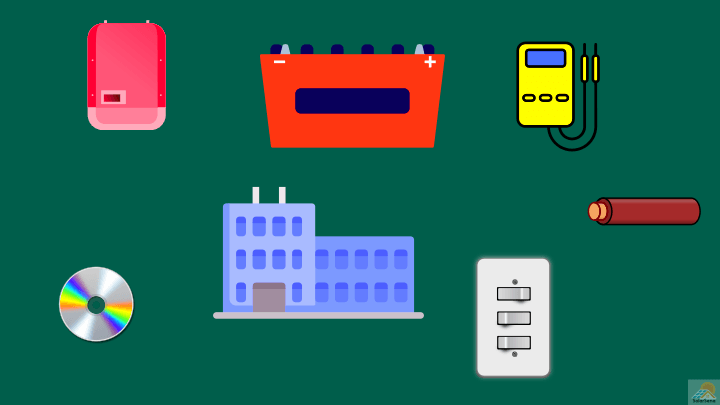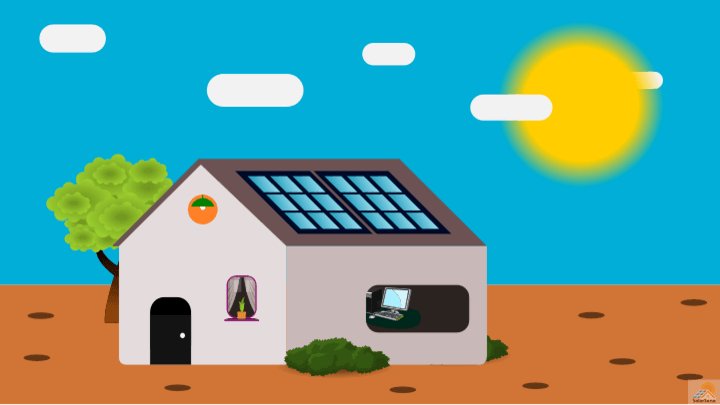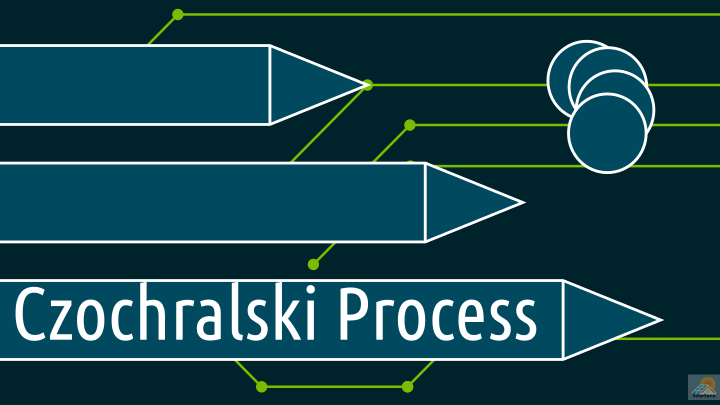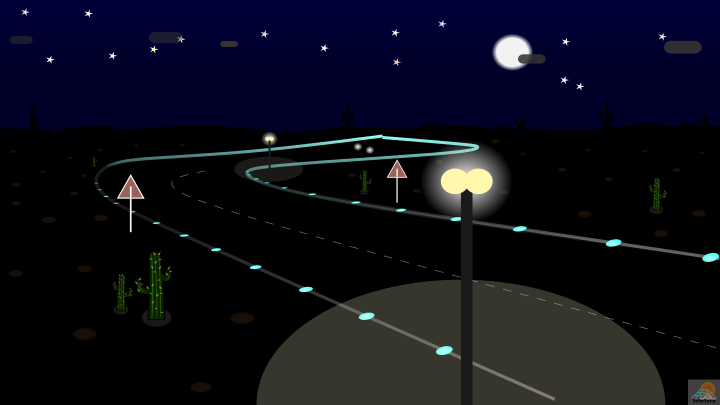In the photovoltaic system, solar panels are the most important part. Without it, the entire system is redundant. They are like the engine of a car. An engine converts one form of energy into another.
In the case of the photovoltaic system, solar panels turn solar energy into electricity.
However, there are also other crucial components and equipment in the photovoltaic system. These parts, other than solar panels, are called the balance of system (BOS).
The balance of system (BOS) is each and every part and equipment used in the photovoltaic system other than solar panels. BOS primarily includes inverters, batteries, charge controllers, power conditioners, switches, wiring, and junction boxes.
Other elements of BOS covers battery chargers, mounting systems, safety devices, sensors, metering systems, solar trackers, solar concentrators, lens, reflectors, etc.
Even intangible assets like power management software are part of the balance of system. Sometimes, land and offices are also named in BOS, particularly in large solar projects.
The balance of system varies from project-to-project. For example, residential projects cover minimum BOS, while commercial or utility projects will have a large number of auxiliary components.
Balance of system (BOS)
In this section, we will brief on several items in the balance-of-system.
Inverters
Solar inverters turn direct current (DC) to oscillating alternate current (AC). The electric current produced by solar panels is always DC, but our utility systems work in AC. So, we need inverters that can transform DC into AC.

They are the most crucial component of the photovoltaic system after solar panels.
Batteries
Batteries are an optional item of the balance-of-system, especially in residential projects. They store the power generated from solar panels and can even store from utility grids.
Like solar panels, batteries work with direct current (DC). So, we need to connect their output to an inverter to convert DC to AC.
Although an optional part of the PV system, they are really useful in an outage of power. One major drawback of them is they are expensive and can increase the budget substantially.
Charge controllers
Charge controllers, or battery regulators, are devices that regulate channeling and withdrawal of electric charges to and from batteries. In simple words, they manage the electricity flow in batteries and also protect from overcharging.
Charge controllers can come in a standalone device or may be integrated into the circuitry. Since batteries are an optional balance-of-system, so are charge controllers.
Power conditioners
Power conditioners help to improve the quality of electricity. The output of an inverter usually contains noise, peaks, distortion, and surges.
Many home appliances are sensitive to power disturbance. And they can get damaged if subjected to unregulated power. Power conditioners solve many such problems and deliver healthy electricity.
Nowadays, power conditioners are well integrated with inverters to better safeguard electrical devices.
Wiring
Wiring is a basic component of any electrical system. Like in all, wiring cable serves to connect solar panels and other electrical parts of the PV system. There are some standards set to follow for the solar cable. Like, solar cables must withstand UV radiation, weather & temperature variations.
Switches
Switches are another essential part of the electrical system. They have multiple functions: to break or connect the circuit, to divert the current, to protect the system, etc. Many specialized switches are used in the PV system, such as relays, circuit breakers, automatic switches.
Junction boxes
Junction boxes are metallic or plastic boxes used as a meeting point for electrical connections. They are a common part of the wiring system.

The main purpose of the junction box is to protect electrical connections and provide safety to wires as well as us.
Battery chargers
Battery chargers replenish batteries. As a standalone, they are getting uncommon in the photovoltaic system. It is due to the fact that modern systems integrate them with inverters.
Mounting systems
Mounting systems give support to solar panels. Whether the installation is rooftop or ground-mounted, solar panels need to be properly fixed on a structure.
A good mounting system secures solar panels from physical damage. Mounting may also be also necessary for other equipment in the balance of system.
Metering systems
The metering system is useful to record energy usage. It measures the flow of electricity through to it. For example, you have the on-grid system installed. With net metering technology, you can measure the energy usage from the grid and the energy supplied to the grid.
The former will tell you how much energy you have consumed from your utility grid. And the latter gives you the surplus energy produced by your photovoltaic system.

If your energy provider does not allow net metering, you have to install a second meter to measure the power supplied to the grid.
Sensors
Sensors are part of the balance-of-system in large-scale PV projects. They are part of the instrumentation and useful for monitoring and maintenance purposes.
In the utility plant, sensors help to track the real-time data of environmental variables, like solar irradiance, wind speed.
Safety equipment
Safety equipment is vital to protect the system and humans from accidents. Unaccepted events can disrupt the functioning of electrical instruments and may lead to permanent failure of equipment.
Some potential bad incidents include lighting, power surge, device malfunction, fire, exposure to a live wire. To overcome such hazards: the PV system has various safety measures installed, such as surge arresters, grounding, combine boxes, safety disconnects.
Solar trackers
GPS solar trackers guide solar panels, reflectors, lenses, and mirrors in the correct direction. The position of the sun changes hour-to-hour and season-to-season. So, it is necessary for panels and other parts to follow the movement of the sun.
It maximizes light absorption and increases overall efficiency. They are often a part of the balance-of-system of large-scale projects.
Solar concentrators
Solar concentrators in the PV system use curved optical surfaces, like lenses, mirrors, reflectors, to concentrate sunlight onto specialized solar cells. These solar cells can withstand high temperatures.

It is an uncommon electricity production technique compared to the traditional PV system.
Power management software
The balance of system also encompasses power management software. Software is useful in the bigger solar system, where automation and simulation are required.
It can track numerous parameters at once and take the appropriate response as required. With automation, the system operates smoothly and securely.
Cost of balance of system (BOS)
The main hindrance in PV technology is the cost of solar panels. But it’s not completely true. BOS also contributes a large portion of the total cost. In utility plants, BOS can amount up to two-thirds of the total cost.
The cost of the balance of system includes the cost of inverters, hardware, labor, sales tax, and overheads. It also covers permitting interconnection and inspection (PII) fees, land cost, buildings cost, and any other expenses that may apply.
Like solar modules, the total cost of the balance of system has declined over time. The graph below reflects the same.

From the above chart, it is clear the price of BOS has depreciated, similar to solar panels. Further, it can be observed that not every component of the balance of system has shown the same decrement. For example, the cost of land, sales tax, and overhead have remained plateau from 2010 to 2017.
From the above trend, solar technology seems to be reaching a saturation level. In the initial years, the fall of the cost of BOS was substantial, while the values haven’t changed much in the later years.



